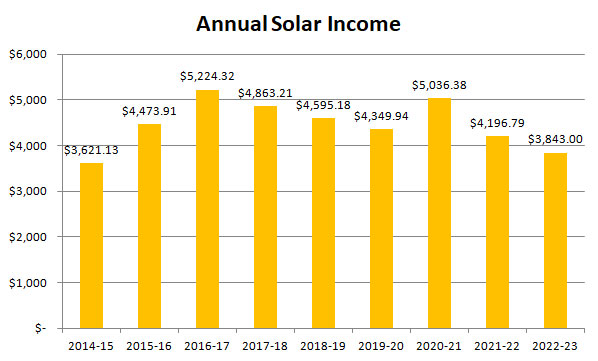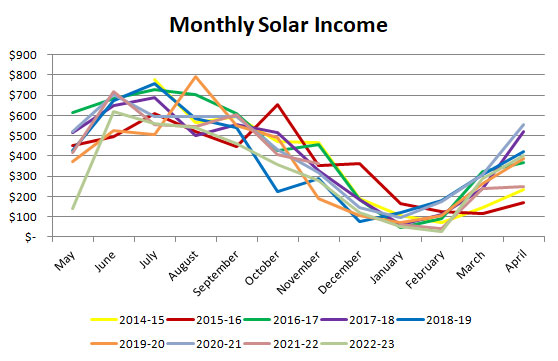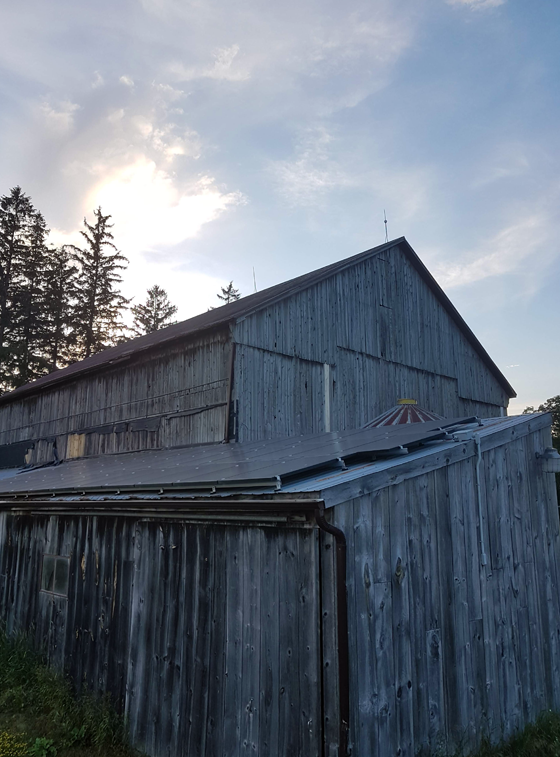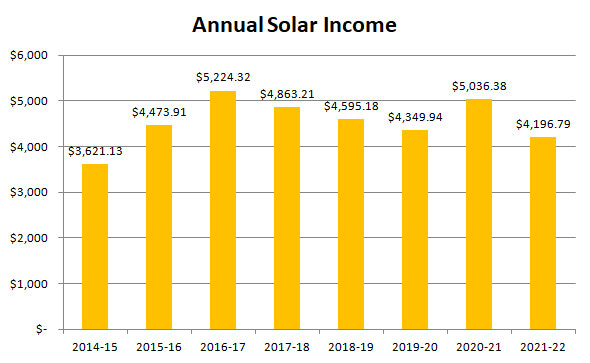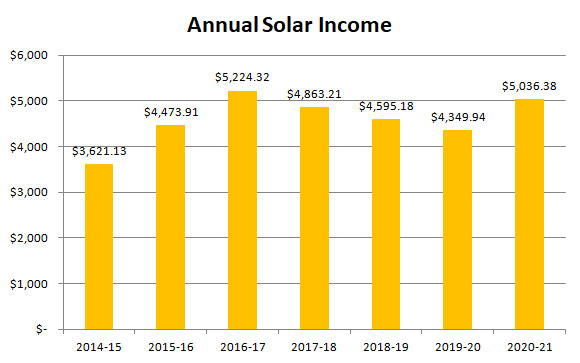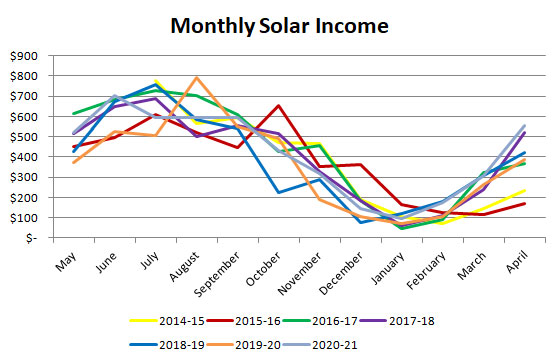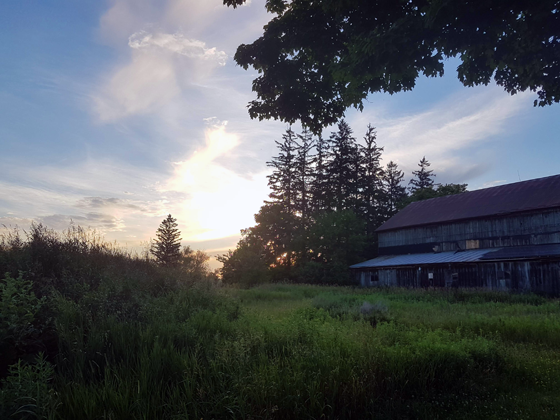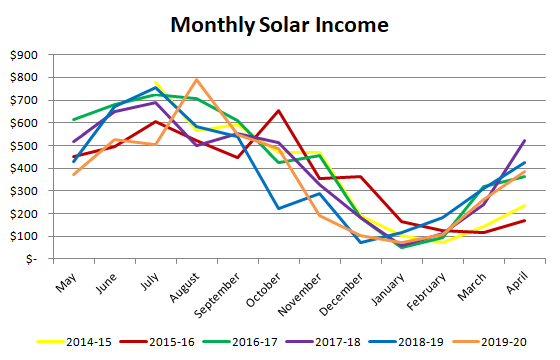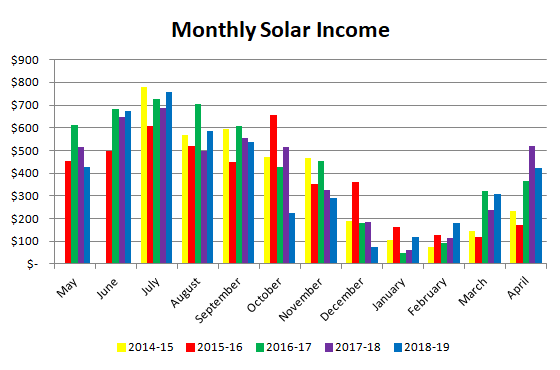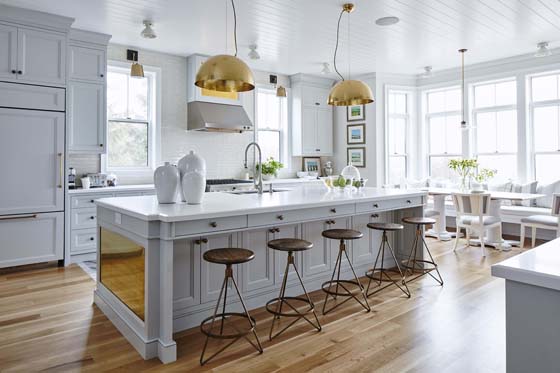At the end of April, our solar panels turned 10. We celebrated the occasion with a sunny day and the inverters humming along (they actually hum as they convert the power). We also celebrated because over the course of the last year, the solar panels finally earned as much money as it cost to install them.

Here is my annual review of how much we’ve earned and how it compares to previous years.
If you need to get caught up, here are all of the previous updates and other details:
- The Ontario microFIT solar program and our application process
- Installing the solar panels and connecting to the grid
- Our solar panels by the numbers
- Year 1 update
- Year 2 update
- Year 3 update
- Year 4 update
- Year 5 update
- Year 6 update
- Year 7 update
- Year 8 update
- Year 9 update
Let’s start with the big number. Ten years ago, we paid $40,727.46 to install our 40 panels. Since then, the government has paid us a grand total of $44,515.57 for the electricity the panels have produced (our rate with the province is $0.396 per kWh). So we are now $3,788.11 ahead. It took us 9 years and 2 months to fully “pay off” the panels, a bit longer than my original estimate of 8 1/2 years.
This past year the panels generated $4,311.71. This is a slight increase over last year, but I made an accounting change this year to reinstate HST on our payments, so the total reflects that more than any change in electricity generation. We’re just under our annual average of $4,451.56.
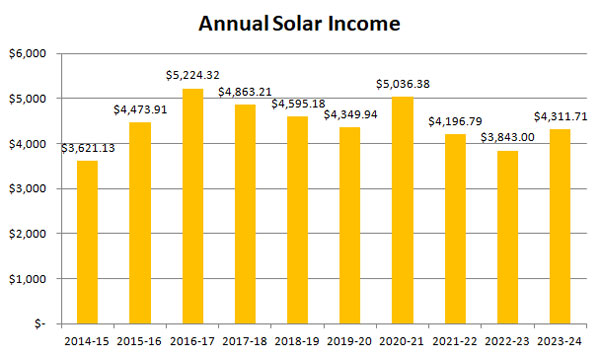
As usual, we made more than we consumed. We spent $2,661.31 on electricity over the same time period, giving us a profit of $1,650.40. (It always feels good to cover our hydro bills.)
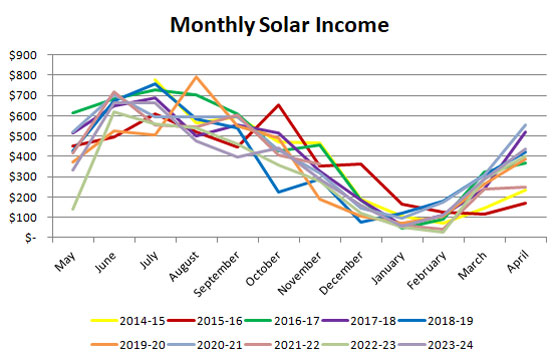
Ten years also marks the halfway point of our 20 year contract.
For now, I’m content to let the panels hum along and see how this all plays out. Hopefully someday we can upgrade the panels, generate our own power and disconnect from the grid.
Regardless, I am proud of what we’ve accomplished so far and the choice that we made to go solar.

